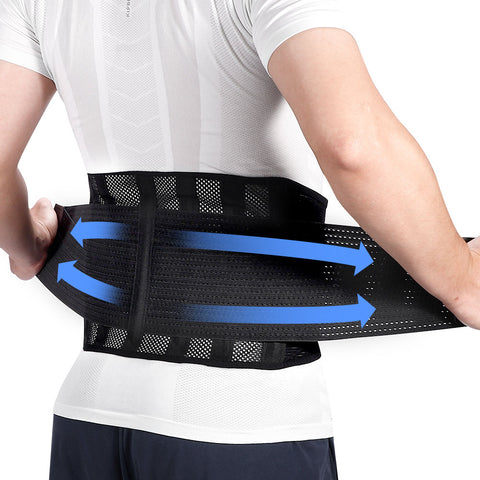If you’re suffering from lower back pain, wearing a back brace can provide much-needed support and relief. In this article, I will guide you on how to properly wear a back brace to alleviate your discomfort and promote healing.
Click to find more about how to wear a back brace for lower back pain.
The Correct Way to Wear a Back Brace
To effectively use a back brace for lower back pain, it’s crucial to follow these steps:
- Start by selecting the right size of the back brace that fits snugly around your waist without causing any discomfort or restricting movement.
- Position the center of the brace at the small of your back, aligning it with your spine.
- Tighten the straps evenly on both sides of the brace until it feels secure but not too tight. This will provide optimal support while allowing proper circulation.
- Avoid slouching or bending forward excessively while wearing the brace as it may hinder its effectiveness. Instead, maintain good posture and engage in gentle movements that don’t strain your lower back.
- Wear the back brace for short periods initially and gradually increase its usage duration as recommended by your healthcare professional. It’s important not to become overly reliant on it and allow your muscles to strengthen naturally over time.
Different Types of Knee Braces
In addition to providing guidance on wearing a back brace for lower back pain, let’s explore various types of knee braces available in today’s market:Find more about kinds of knee braces.
- Hinged Knee Braces: These braces offer maximum stability and protection by incorporating metal hinges on both sides. They are ideal for individuals recovering from severe knee injuries or undergoing post-surgery rehabilitation.
- Compression Knee Sleeves: Designed to provide support and alleviate pain caused by conditions like arthritis or mild knee strains, compression knee sleeves are lightweight and flexible. They offer gentle compression to reduce swelling and improve blood circulation.
- Patellar Stabilizing Braces: These braces focus on stabilizing the kneecap (patella) to prevent it from shifting out of place during physical activities. They are commonly used by athletes who engage in high-impact sports.
The Benefits of Using a Hyperextended Elbow Brace
A hyperextended elbow brace can be immensely beneficial for individuals experiencing elbow instability or recovering from an injury. Here’s why:
- Stability: A hyperextended elbow brace provides stability to the joint, reducing the risk of further damage during movement or physical exertion.
- Pain Relief: By limiting excessive extension of the elbow, this type of brace helps alleviate pain associated with hyperextension injuries.
- Supports Healing Process: The brace promotes proper alignment and supports the healing process by preventing unnecessary strain on injured ligaments or tendons.
In Conclusion

To effectively manage lower back pain, wearing a back brace can provide valuable support and relief. Remember to follow the correct method of wearing a back brace as outlined above. Additionally, consider exploring different types of knee braces based on your specific needs for optimal comfort and protection. If you’re dealing with a hyperextended elbow, using an appropriate brace can aid in stability, pain relief, and facilitate faster recovery. Always consult with healthcare professionals for personalized advice regarding your condition.
